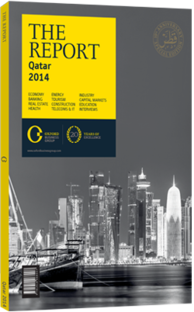Steady progress: Efforts to attain emerging market status have finally paid off
The Qatar Exchange’s (QE) journey to attain “emerging market” status from the influential Morgan Stanley Capital International (MSCI) has been a long and transformative one. Since it was established in 1995, the QE has been assiduously upgrading the regulatory and technological environment within which it operates, while simultaneously establishing international best practices. In recent years it has courted international investors through moves such as allowing the Qatar Central Bank to provide cash settlement services for trades carried out in its Central Securities Depository, modifying the QE index and partnering with NYSE Euronext to introduce its Universal Trading Platform.
Key Efforts
An upgrade from “frontier” status to that of emerging market was the goal that lay behind much of the QE’s activity, and by 2011 speculation began to mount that MSCI would look favourably on Qatar’s application for upgraded status, with a review due to be held in June of that year. However, MSCI instead chose to extend the review period until the end of 2011, to allow more time to assess the impact of QE’s recent technological and procedural changes.
Optimism about an upgrade in the short term remained high in the following months, largely due to the introduction of a new delivery-versus-payment (DvP) system. The enhanced clearing and settlement process meant that it was no longer necessary for custodians to maintain dual accounts, bringing the exchange in line with international best practices.
However, a potential barrier to an upgrade was flagged up by MSCI in a 2011 statement regarding the process, when it cited restrictions on foreign ownership of Qatari companies as a hindrance to the QE’s promotion, and the year closed without a decision being made.
Worth The Wait
The QE continued to work towards an upgrade during 2012, but as yet another year passed without a favourable decision from MSCI, a degree of scepticism began to emerge within the investment community regarding the likelihood of a successful application. The MSCI announcement in June 2013 that it would reclassify the MSCI Qatar Index to emerging markets status as part of the May 2014 Semi-Annual Index Review, was therefore fulsomely welcomed by an investment community that had followed the process with interest from its beginning.
In its statement, the MSCI acknowledged the work of the QE in introducing and subsequently enhancing its DvP model, and the benefits this had brought international investors with regard to the safeguarding of their assets. For many observers, though, the most interesting aspect of the decision was the accommodation reached between Qatar and MSCI regarding the foreign ownership issue. The MSCI noted “the progress made to date and the further commitment of the Qatari authorities to increase the foreign ownership limit (FOL) levels applied by Qatari companies”, and commented that several companies had requested that the QE modify its method for calculating the FOL from using the total free float market capitalisation to instead using their total market capitalisation.
Lower Priority
The urgency of the FOL question is largely moot, as most Qatari companies have a foreign ownership limit of 25% but have received modest amounts of foreign investment. “Non-Qatari ownership of the whole market is on average 11%, so there is room for more [foreign participation] before we even approach the limit,” Ahmed M Hassan, senior business development officer in QE’s Listing Department, told OBG. It is likely that this line of reasoning played a major part in the negotiations between Qatar and the MSCI.
In its statement, the indexer adopted what many analysts viewed as an equitable stance, acknowledging the low levels of foreign ownership in the market while enjoining the Qatari authorities to “actively continue to increase them above 25% in order to mitigate potential issues arising from increasing foreign capital inflows”. The question of foreign ownership, so long regarded as a block to the QE’s promotion, therefore seems destined to be resolved in incremental fashion – an outcome that appears to suit both parties well.
You have reached the limit of premium articles you can view for free.
Choose from the options below to purchase print or digital editions of our Reports. You can also purchase a website subscription giving you unlimited access to all of our Reports online for 12 months.
If you have already purchased this Report or have a website subscription, please login to continue.

